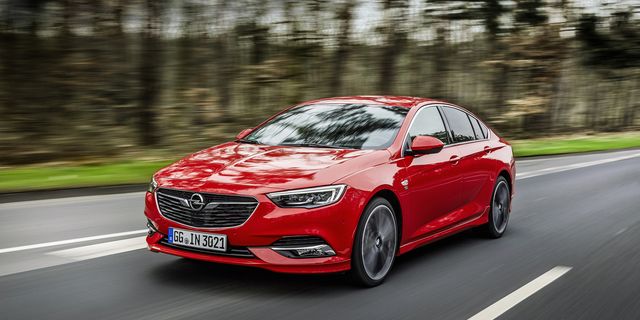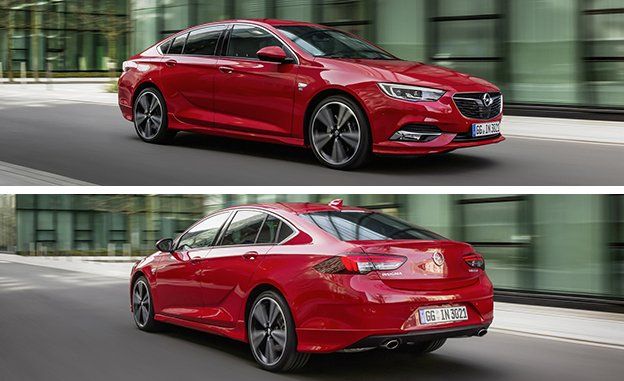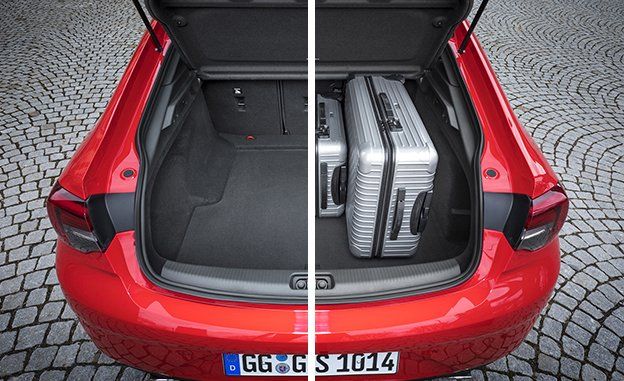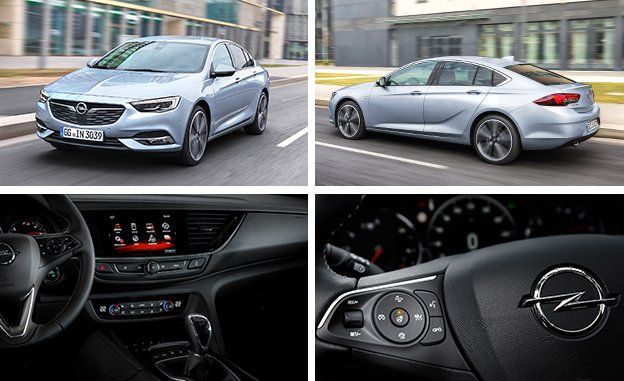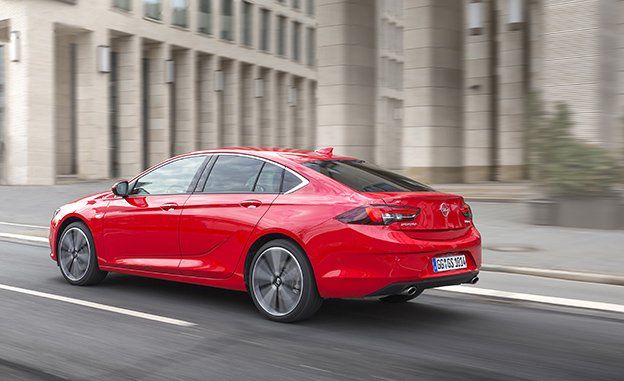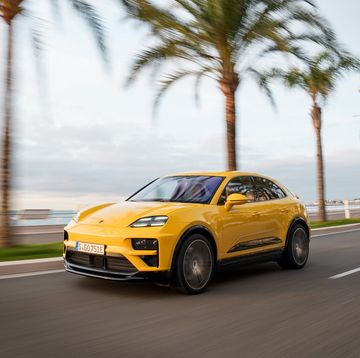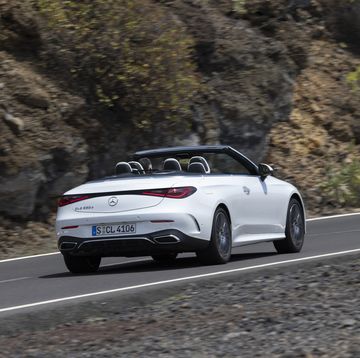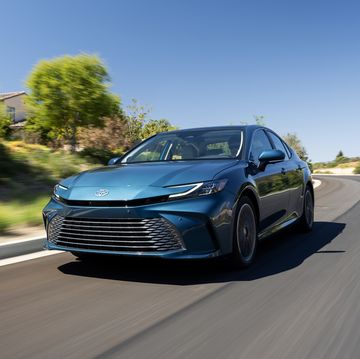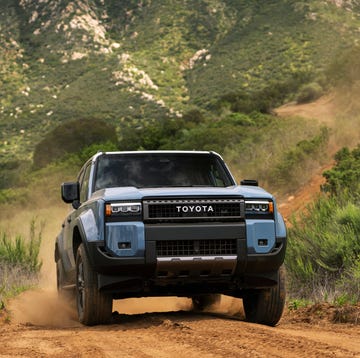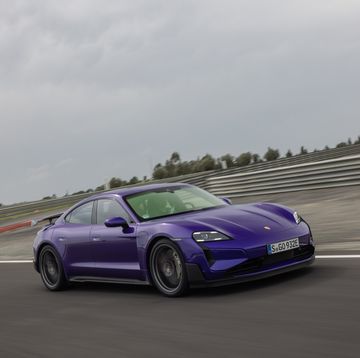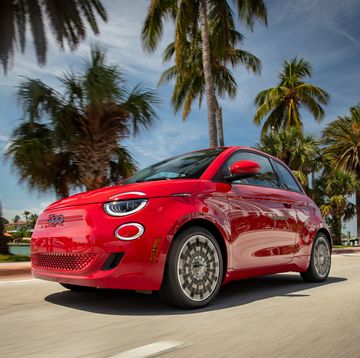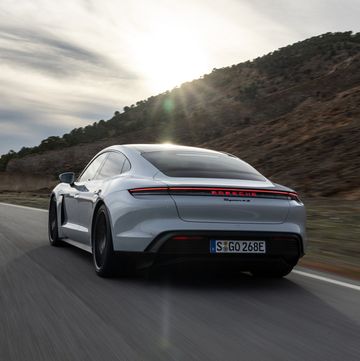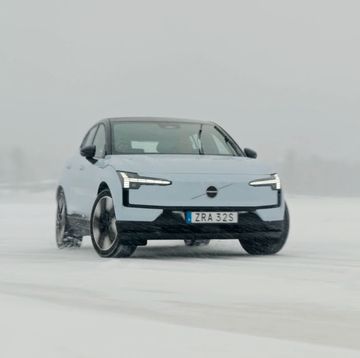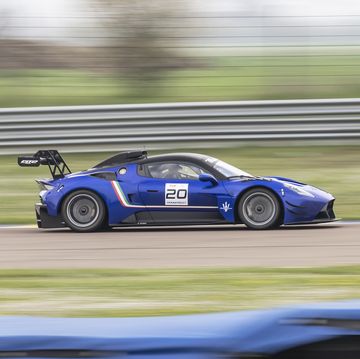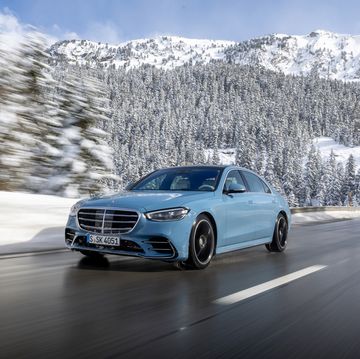Divorce often is a messy business, with myriad difficult decisions to be made or fought over. Where will the kids live? Who gets the dog? Or the wedding china? And what about that mid-size hatchback you’ve just spent several hundred million dollars developing?
General Motors’ recent decision to divest itself of its European subsidiaries means that the new Opel and Vauxhall Insignia—along with the rest of the company’s former assets on the other side of the Atlantic—now belong to the French PSA group (owners of the Peugeot, Citroën, and DS brands). But the settlement deal also included the equivalent of joint custody, with Opel committed to producing versions of the Insignia for GM to sell outside of Europe. In the United States and China, this car will be the new Buick Regal Sportback, while in Australia it will become the Holden Commodore.
While the new Regal isn’t here yet, we’ve driven the range-topping Insignia Grand Sport 2.0T AWD in Germany. Although we expected some changes, we’ve already seen the Buick version and it appears the alterations are mostly superficial. American drivers should be getting excited.
No Apologies Needed
Most new cars are better than the models they replace; that’s how progress is supposed to work. But few have managed to improve by the margin seen in the new Insignia. Its predecessor was launched in Europe in 2008, and it has been a segment also-ran for most of its life. While Buick has managed to give the Regal a slight premium shine, the Insignia has always been the epitome of an unexceptional mid-sizer in its homeland, the sort of car the Hertz representative apologizes for giving you when they run out of Volkswagen Passats.
The new Insignia sits on GM’s upgraded Epsilon II (Europeans say E2XX) architecture, making it platform buddies with the Chevrolet Malibu. It pretty much aces the scorecard compared with its predecessor: bigger, lighter, more efficient, and—with the turbocharged 2.0-liter engine—faster. More important, it looks good: GM Europe can be said to have pretty much saved its best for last, with this car being much tauter and leaner than its predecessor. Overall length has increased by 2.6 inches; the wheelbase, while identical to the Malibu’s, is 3.6 inches longer than before; and the roof sits an inch lower.
And yes, it’s a hatchback or, as Buick dubs it, a Sportback. Opel decided to simplify the three body styles of the previous Insignia into two. The Grand Sport uses a long, notchback-emulating liftgate to give it a sedanlike side profile, but the whole rear glass lifts with the decklid. A wagon version also is on sale in Europe, and it, too, is spawning a Buick counterpart with a raised suspension (the Regal TourX).
The car we drove for this report was a fully loaded German-market Insignia in Dynamic trim with the top-of-the-range turbocharged 2.0-liter inline-four and all-wheel drive. Equipment was generous, with most of it expected to make the transition to the plush versions of the Regal: a reconfigurable digital display screen in the center of the instrument cluster, a large touchscreen for infotainment functions, LED headlights, adaptive dampers, a head-up display, adaptive cruise control with lane-keeping assist, a 360-degree camera system, onboard Wi-Fi through a 4G LTE connection, and power front seats with a massage function. The car also had Opel’s version of OnStar, which is exactly like ours, only it speaks German.
While exterior dimensions have increased modestly, the new Insignia feels significantly more spacious inside. There is generous room for four adults, with the possibility of seating three across in back, plus a decent-size cargo hold (even though the big liftgate is heavy to open). Interior quality is good, and although not quite as upmarket as the premium German rivals, it’s solidly constructed and—for the most part—well thought out.
An 8.0-inch touchscreen (lower trim levels have 7.0-inch screens) in the center of the dashboard controls most functions other than heating and ventilation. It’s intuitive to use but lacked the graphic slickness of posher systems, and the white background color was too bright in low light; we’ll have to wait to discover what changes, if any, Buick will make to the user interface.
Lighter and Lively
The turbo 2.0-liter four-cylinder is effectively carried over from the previous model, but it has received a slight power boost to 256 horsepower (up from 246). It doesn’t feel quite as enthusiastic as that number suggests it should, though, because the engine has been tuned for everyday drivability rather than all-out pace. Also, like many modern turbocharged engines, it is reluctant to rev far beyond 5000 rpm.
The weak link in the powertrain is the eight-speed automatic gearbox that comes with the all-wheel-drive system, and which proves to be too eager to upshift even when acceleration is needed. Front-drive versions of the Buick will have the same nine-speed transmission as the Malibu. Ultimate performance still impresses, but we’ll have to wait to run a track test when we get our hands on a production Buick model. It certainly feels lively, and a gap in traffic on a derestricted stretch of autobahn was long enough to see an indicated 248 km/h (154 mph), just shy of the official 250-km/h speed limiter.
The autobahn experience also confirmed the Insignia’s considerable talents as a high-speed cruiser, staying stable and composed even at the sort of velocities that would earn custodial sentences in the States. Ride quality is less good at lower speeds, with the adaptive dampers being slightly too firm in their Sport setting and slightly too soft in the comfort-oriented Tour mode.
The new model’s weight reduction equates to about 200 pounds when compared with the last AWD version, and while the Insignia doesn’t possess the agility of something like an Audi A4, it can generate impressive grip when called upon to do so, although at the expense of serious body roll under hard cornering. The AWD system employs a version of GKN’s Twinster torque-vectoring rear differential that is also used under the Ford Focus RS. The Opel shows none of the Ford’s magical ability to tighten its cornering line under extreme use, but the vectoring function certainly reduces understeer at more ordinary speeds.
An Anomaly to Anticipate
The Insignia may be a historic anomaly, but it’s a fine car in its own right. It’s conspicuously more talented than any of the like-size cars that PSA has engineered itself—and which Peugeot and Citroën struggle to sell even to nationalistic French buyers. Let’s hope that a significant part of Opel’s engineering talent survives the inevitable two-into-one downsizing.
More important for U.S. buyers, the Insignia also is a fine base for the new Buick Regal, promising a product that finally will be worthy of the brand’s upmarket aspirations. Stir in reports of a V-6–powered GS model to follow this Sportback and the TourX into the market and there’s much worth waiting for in this Buick.
Specifications
Our man on the other side of the pond, Mike Duff lives in Britain but reports from across Europe, sometimes beyond. He has previously held staff roles on U.K. titles including CAR, Autocar, and evo, but his own automotive tastes tend toward the Germanic: he owns both a troublesome 987-generation Porsche Cayman S and a Mercedes 190E 2.5-16.
